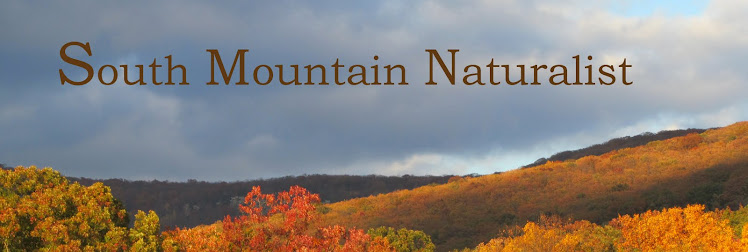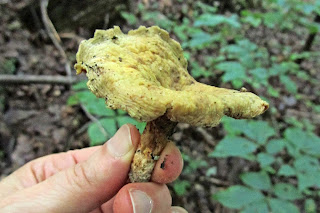Fungi identification can be challenging. Some similar species require microscopic examination or even chemical analysis to distinguish between them. Some species are so obvious, finding a name is relatively easy, just leaf through the field guide and the photo jumps out at you like a suspect in a line up. So it was with this Orange Pinwheel Marasmius (Marasmius siccus). It falls in the category of "Small Fragile Gilled Mushrooms" in the Audubon field guide. The next pix shows the gills inside the cap.
This next one looks very common and familiar but I could not find an absolute look-alike in my Audubon Society Field Guide to North American Mushrooms. The rosy colore, concave surface, smooth pale stalk, and attached (to the stalk) gills point to its identity. But again a lack of complete observation impairs a positive ID. Is the bottom of the stalk bulb shaped, for example?
A Russula? False Caesar's Mushroom?
Orange Coral Fungi --this group is easily recognized
by its resemblance to undersea phenomena
A type of chanterelle? Chanterelles include choice edible 'shrooms. I've sampled them at a meeting of the West Virginia Mycological Society. They were incorporated into a cream cheese dip! Although I was surrounded by experts and knowledgeable amateurs, I was a bit fearful having never eaten wild mushrooms before, so not sure I let my taste buds experience their subtle flavors as I might have.
Another fragile gilled mushroom, picturesquely
posed on a bed of moss!
Likely a polypore--that bears some resemblance to a fungi called Hen of the Woods.
Its green cast give it a lettuce like appearance.
This mass of golden clubs appears to have just thrust itself from the ground beneath the leaf litter.
Deep fleshy cups on this one
Springing from a decaying log












